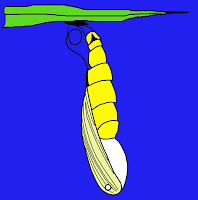Scientific Classification
Kingdom – Animalia
Phylum – Arthropoda
Class – Insecta
Order – Hemiptera
Family - Pentatomidae
Stinkbug, the common name for a family of insects. There are thousands of species, found in most parts of the world. Stinkbugs are so named because they secrete a foul-smelling liquid that is repulsive to most predators.
Some species are serious pests, others are beneficial because they feed on other harmful insects.
Like all true bugs, stinkbugs have no chewing mouthparts. Instead, they have tubelike beaks called rostrums attached to their heads. The rostrum has four thin, sharp needles in it.
Most kinds of stinkbugs suck the juices of plants. Some kinds suck the body fluids of insects. Others feed on both plants and insects.
When not feeding, stinkbugs hold their beaks underneath their bodies between their front legs.
Like most true bugs, a stinkbug has two pairs of wings. The back wings are so thin you can almost see through them. The front wings are thick and tough at the base and very thin at the tips. When a stinkbug rests, the tips of its front wings cross, forming what looks like an “X.”
A tough shell, or exoskeleton protects the bug’s entire body.
A stinkbug gives off a very bad smell if it is disturbed. The smell comes from a stinky liquid that flows from two glands on the bug’s thorax.
After mating, a female stinkbug lays batches of eggs. The eggs are usually laid on plant leaves. Stinkbug eggs look like tiny barrels
Microscopic View of the Egg
Stinkbugs, like all true bugs, change as they grow. Like all insects, they go through a process called metamorphosis
Nymph is born with a hard outer layer of skin that it soon outgrows. So the nymph molts. After the fifth and last molt, the wings are fully developed. A stinkbug nymph becomes an adult after about a month.
Several species of parasitic wasps have been found to attack stink bugs
My Observation
3-6-1993 Collected a batch of eggs pasted in a cycus plant leaf in Palode,
Thiruvananthapuram
The microscopic view of an egg is shown above.
The eggs were attached to the leaf with a gum like material and the lid seems sewed with the shell by web
The egg is like a barrel having a lid at top
The black markings and the white spots were embossed from the shell



.jpg)









.jpg)
.jpg)




(W).gif)
(W).gif)
.gif)









